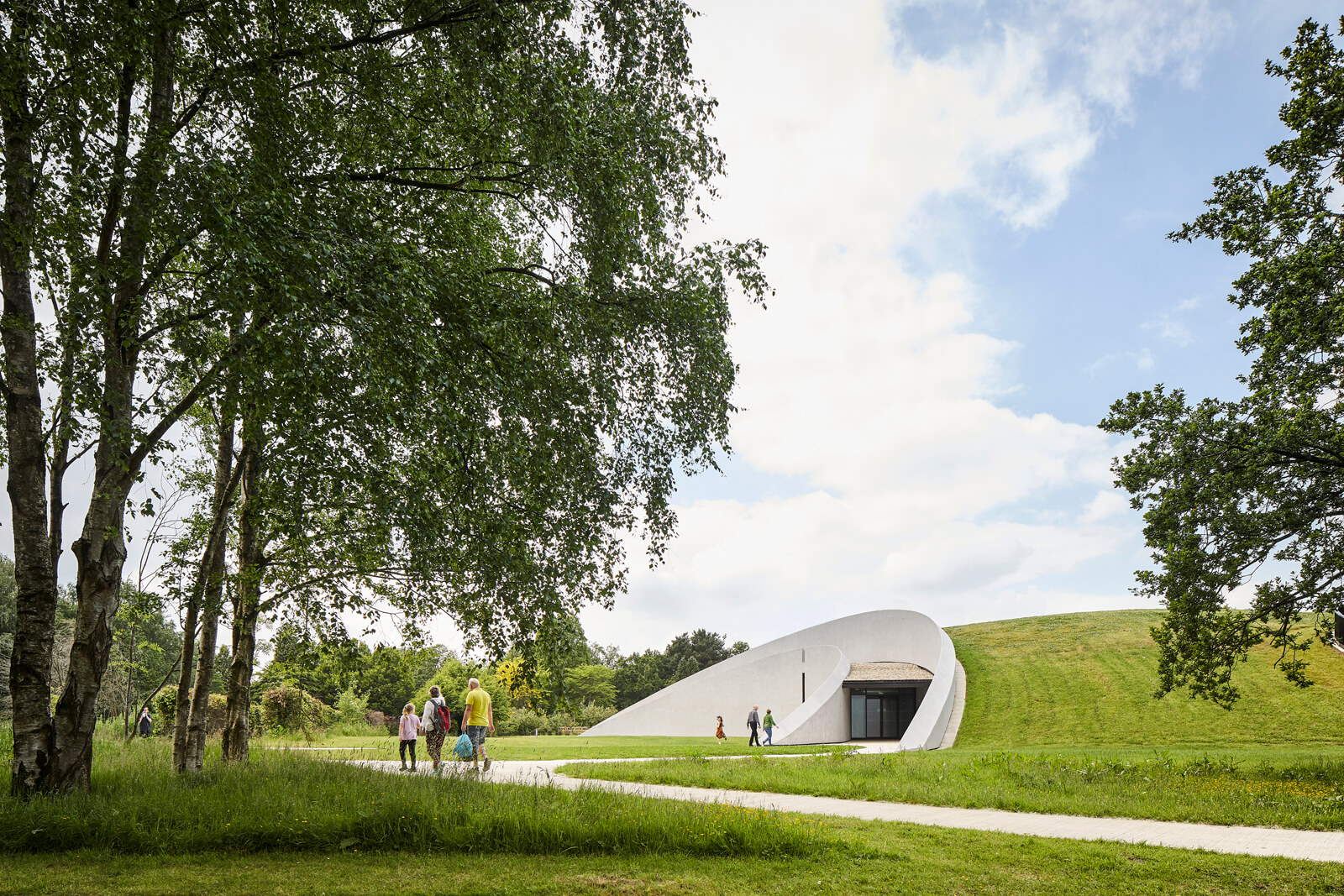The Jodrell Bank Observatory, at the University of Manchester in England, hosts several radio telescopes with over 50 years of intergalactic stories to reveal. As the world’s oldest radio astronomy observatory, the institution has witnessed some of the most groundbreaking intergalactic discoveries since the dawn of the Space Age. In July 2019, the Observatory was formally recognised by UNESCO’s international community as a site of Outstanding Universal Value. A brief for a new cultural centre was presented, inviting visitors to discover the world-famous Jodrell Bank Observatory, a wealth of technology, design and innovation. As a tribute to this significant site, the centre, named First Light Pavilion, brings these stories to life for everyone, from dedicated intergalactic enthusiasts to casual stargazers.
The architectural project was granted to Australian firm Hassell, which has more than 80 years of experience designing projects of varying scale and type, from iconic public buildings to entire city precincts. As a multi-disciplinary design practice, with a studio in London, their talented teams promote people and place.
The design of this centre celebrates both the site’s heritage and the very beginnings of radio astronomy. In addition to taking inspiration from the site itself, the design was influenced by a range of sculptures, structures and natural landforms from around the world, ranging from ancient monuments such as Newgrange in Ireland to the renowned circular Fuji Kindergarten in Tokyo. In speaking of the vision and achievement of the structure, Hassell’s principal architect Julian Gitsham mentions, “The completion of the First Light Pavilion marks a new era for Jodrell Bank. It will introduce new generations to the rich history of the site and the wonders of radio astronomy.”
To respect the protected landscape of the site, the design for the pavilion is visualised as a grassy mound rising from underneath the grass cover—an engineering feat in its own right. While above, the built environment provides a perfect platform for the amateur astronomer with elevated views of the park. Inside the hill, visitors can immerse themselves in exhibits on Jodrell Bank’s past discoveries and learn more about the Lovell Telescope. The roof, manufactured as a super thin, super high-performing concrete shell structure, references the form and exact size of the 76.2m diameter dish of the nearby Lovell Telescope—one of the world’s largest and most powerful radio telescopes. Evoking the minimalism of futuristic interstellar filmography, the form of the entire structure is simplistic. The narrow entranceway is marked by two dramatic curving concrete walls with its axis due south to reflect the sun’s arc. This passage opens into a large concrete drum containing a 150-seat auditorium and the exhibition space. This is surrounded by a ring of spaces including a cafe, kitchen, classroom, offices and toilets. Facing due south, a slim vertical window right in the centre of the building invites the sun to shine through a finger of light that moves across the entrance foyer as the day goes on, acting as a giant sundial.
“The observatory team has been committed to developing the site in a way that is sensitive to its heritage, yet transformational in its future impact. To have been part of this team is an exceptional opportunity for Hassell. We have embraced the challenge to push the boundaries of design to deliver what will undoubtedly be a truly exceptional experience for all who visit this remarkable site. Given the location of the building and its potential impact on the existing ecology, environmentally sustainable design forms a key element of the project. It represents an energy-efficient scheme, in harmony with its natural surroundings, with a high-performing envelope for insulation, air tightness, and surface water attenuation,” remarks Gitsham on the sustainable aspects of the overall design scheme.

Exhibition designers from Casson Mann were called upon to breathe life into the interiors. The exhibition space within re-uses sections of the original 1957 observation dish from the Lovell Telescope. As visitors leave the pavilion, a historical avenue of trees frames the giant Lovell Telescope in the distance, inviting them to explore further across the site.
This strategic and intentional design for the First Light Pavilion took top honours at the 64th annual Civic Trust Awards held in London. The jury comments were enthusiastic about the building’s success in providing a new understanding of the Jodrell Bank’s leading science and stories. Some of this included: “A wonderful project ambitiously created and beautifully delivered. It manages to complement the mighty and instantly recognisable landmark of the Lovell Telescope and offer a scientific experience accessible to all.” — 2023 Civic Trust Awards Judges
The project is a boost for the local community and has catalysed new work too, with further development in the pipeline for the Observatory, including the launch of guided tours and a diverse cultural events programme.







